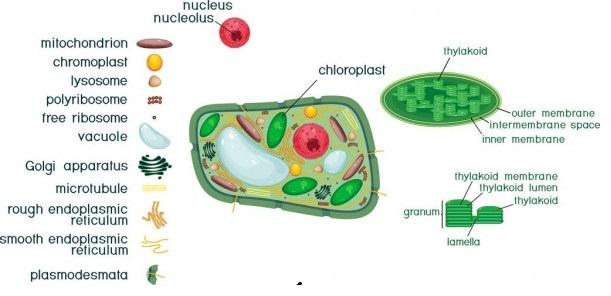
Answer
366k+ views
Hint: Chromoplasm is present in the periphery protoplasm of cyanobacteria. The chromoplasm is rich in thylakoids. The chromoplasm contains chlorophyll and accessory pigments and also some kind of stored substances. Thus, peripheral thylakoid is the appropriate place where chromoplasm can be found. It is the major component of cell structure of cyanobacteria. Chloroplast DNA is not composed of true histones in red algae or proteins that are tightly packed in each chloroplast.
Complete answer:
As we know, Chloroplasts are usually found in green plants and algae. Chloroplasts are often found in photosynthetic tissues which are not green in color, such as brown blades of giant kelp or the red leaves of certain plants. Chloroplast is the pigment which is found on plastid types. The chloroplasts have chlorophyll and carotenoid pigments that are responsible for trapping light essential for photosynthesis.
Like in bacteria, the cell of cyanobacteria contains a layer called a sheath or plasma membrane or cytoplasm. Chromoplasm is a substance that forms a nucleus around the cell during cell division. Chromo-meaning the color part and plasm- the membrane covering. So, protoplasm which stains with dyes are called chromoplasm.
It also defines the pigmented, peripheral protoplasm of blue-green algae and contains chlorophyll and carotenoids. All the carotenoids and chlorophyll are integral parts of the chloroplast which provide pigmentation to the plant.

Note:
So, as we discussed about chromoplast, Majority of the chloroplast of green plants are found in the mesophyll cells of leaves. Chloroplasts are lens-shaped, oval, spherical or ribbon shaped organelles. their number varies from $1$ per cell. Example – Chlamydomonas, green alga. Also, leucoplast is the plastid which is a non-pigmented organelle. without grana, chloroplasts were found to be present in bundle sheath cells.
Complete answer:
As we know, Chloroplasts are usually found in green plants and algae. Chloroplasts are often found in photosynthetic tissues which are not green in color, such as brown blades of giant kelp or the red leaves of certain plants. Chloroplast is the pigment which is found on plastid types. The chloroplasts have chlorophyll and carotenoid pigments that are responsible for trapping light essential for photosynthesis.
Like in bacteria, the cell of cyanobacteria contains a layer called a sheath or plasma membrane or cytoplasm. Chromoplasm is a substance that forms a nucleus around the cell during cell division. Chromo-meaning the color part and plasm- the membrane covering. So, protoplasm which stains with dyes are called chromoplasm.
It also defines the pigmented, peripheral protoplasm of blue-green algae and contains chlorophyll and carotenoids. All the carotenoids and chlorophyll are integral parts of the chloroplast which provide pigmentation to the plant.

Note:
So, as we discussed about chromoplast, Majority of the chloroplast of green plants are found in the mesophyll cells of leaves. Chloroplasts are lens-shaped, oval, spherical or ribbon shaped organelles. their number varies from $1$ per cell. Example – Chlamydomonas, green alga. Also, leucoplast is the plastid which is a non-pigmented organelle. without grana, chloroplasts were found to be present in bundle sheath cells.
Recently Updated Pages
Who among the following was the religious guru of class 7 social science CBSE

what is the correct chronological order of the following class 10 social science CBSE

Which of the following was not the actual cause for class 10 social science CBSE

Which of the following statements is not correct A class 10 social science CBSE

Which of the following leaders was not present in the class 10 social science CBSE

Garampani Sanctuary is located at A Diphu Assam B Gangtok class 10 social science CBSE

Trending doubts
A rainbow has circular shape because A The earth is class 11 physics CBSE

Which are the Top 10 Largest Countries of the World?

Fill the blanks with the suitable prepositions 1 The class 9 english CBSE

What was the Metternich system and how did it provide class 11 social science CBSE

How do you graph the function fx 4x class 9 maths CBSE

Give 10 examples for herbs , shrubs , climbers , creepers

The Equation xxx + 2 is Satisfied when x is Equal to Class 10 Maths

What is BLO What is the full form of BLO class 8 social science CBSE

Change the following sentences into negative and interrogative class 10 english CBSE




